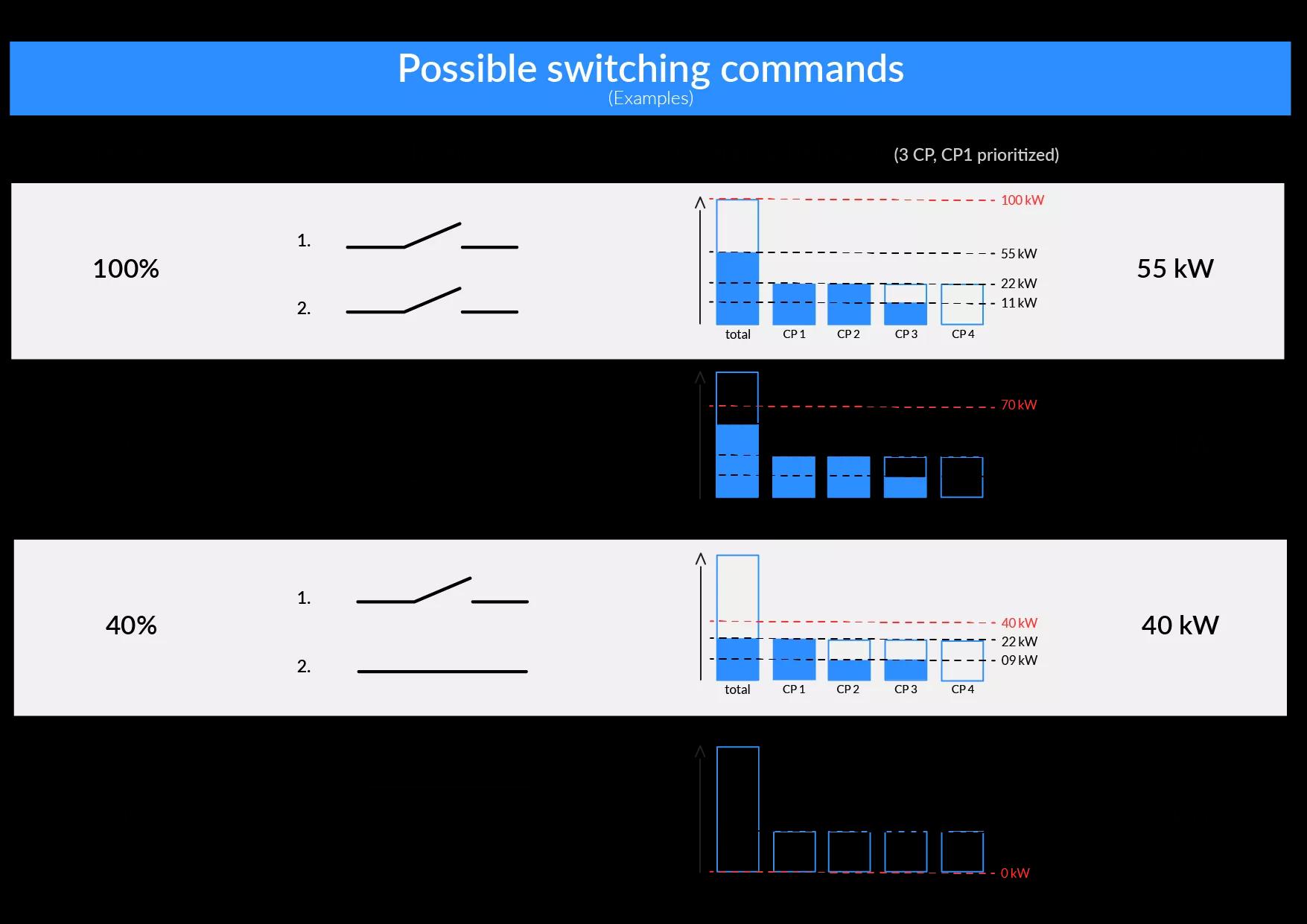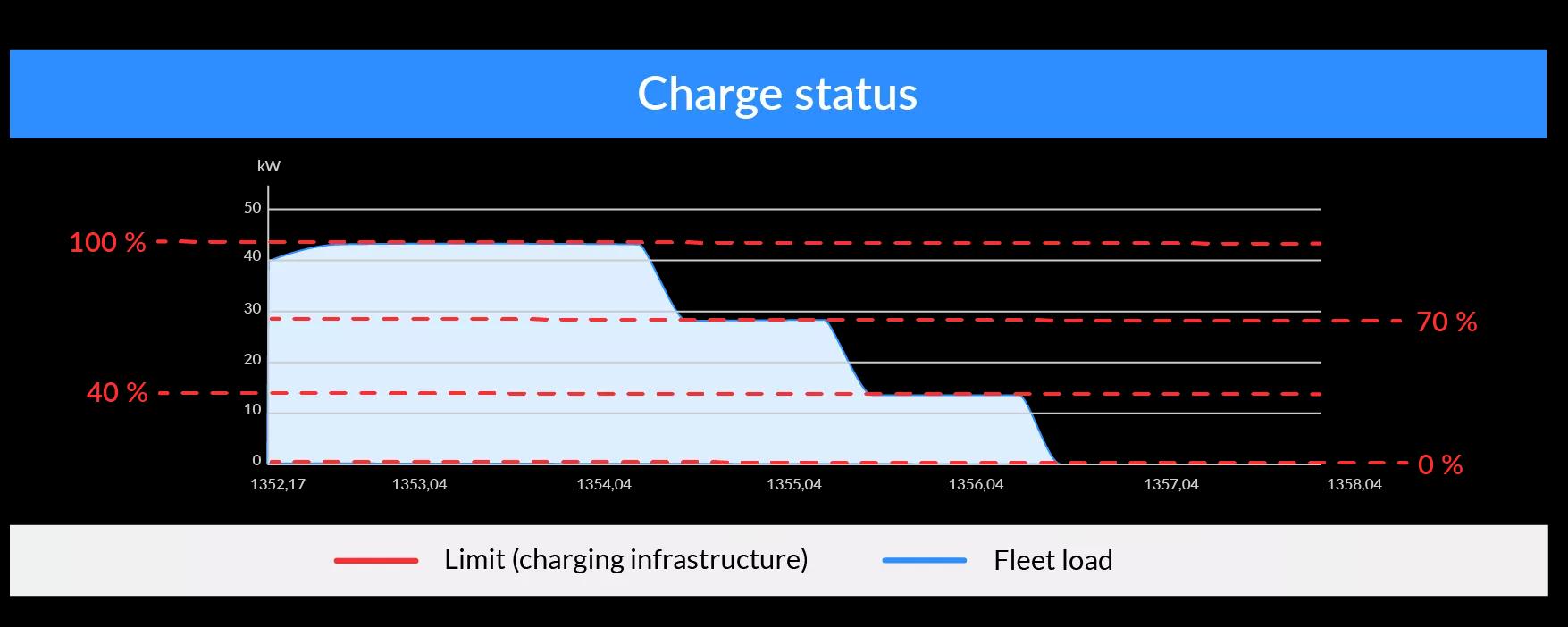To cope with this challenge, The Mobility House has developed a product expansion for the Charging and Energy Management System ChargePilot® using a technology that has proven effective over decades: switching relays operated by ripple control receivers which allows consumers in the power grid to be managed via power lines — much like a remote control. Traditional applications of this technology are familiar from everyday life: heating pumps, hot water tanks and night storage heaters are all controlled to relieve the burden on the grid, as is street lighting. Ripple control receivers are also used to control the flow of renewable energies such as wind or solar power into the power grid.
With a new interface on the ChargePilot’s® local Smart Charging Controller, which reads switch relays from ripple control receivers to stabilize the grid during charging, The Mobility House has made it possible for grid operators to control electric car charging points remotely during peak load times. This allows the charging capacity for all charging points, connected to the controller to be reduced directly on site as needed. Two relays can be read for scalable control, for instance 100%, 60%, 30%, 0%.

In this solution, the Smart Charging Controller from The Mobility House works like a translator, converting the grid operator's analog signal into a digital signal for a targeted control of individual charging points.
By implementing this technology, The Mobility House is complying with the control of charging stations for network stabilization as prescribed in the technical connection rules (TAR) for low voltage, which will gain importance in the upcoming boom of electric mobility. To fulfill the varying requirements for different grid operators, the interface is designed flexibly. For instance, the control values can be configured differently depending on the location, or a single relay can be read.
Integrating ripple control is particularly relevant for connections with multiple charging points, as is the case for fleet operators. Reduction of charging power affects the entire depot, not just individual charging stations. ChargePilot® guarantees that the remaining available output (unless set to 0%) is used optimally and, if necessary, distributed to the vehicles that need it most urgently using VIP controls. This is illustrated in the following graphic.

Here, three electric cars are charging at a location with four charging points, two with 22 kW and one with 11 kW. The required amount of output is more than half of the maximum 100kW that the location can provide. If the grid operator initially scales down the power to 70%, the charging process will continue without being compromised. At Stage 2, when the power is reduced to 40%, ChargePilot® will adapt the charging processes accordingly. Since CP1 is prioritized as a VIP vehicle, it will continue to receive the full 22 kW, while CP2 and CP3 will charge with 9 kW. Even when the output is reduced, charging remains as efficient as possible and adapts to individual mobility needs. If the grid operator scales the power down to 0%, the electric cars will stop receiving electricity for up to 2 hours.
This solution can also handle commands from the FNN control box, so it is already equipped for the future roll-out of systems involving smart metering, smart grids and smart markets. To increase incentives for users to opt for controllable loads and to improve long-term planning for The Mobility House and all other parties involved, the German federal government should further develop Section 14a of the Energy Management Act (Energiewirtschaftsgesetz, EnWG).

The charging curve indicates how ChargePilot® adjusts the output of the charging stations within seconds when the grid operators intervene.
The Mobility House is already working on other projects for grid-stabilizing charging. For instance, the ELBE project in Hamburg allows ChargePilot® to process a signal sent directly from the control unit of the Hamburg power grid via OpenADR to The Mobility House’s cloud for individual grid connection points. ChargePilot® implements the grid operators’ specifications accordingly to distribute energy to individual charging points.
